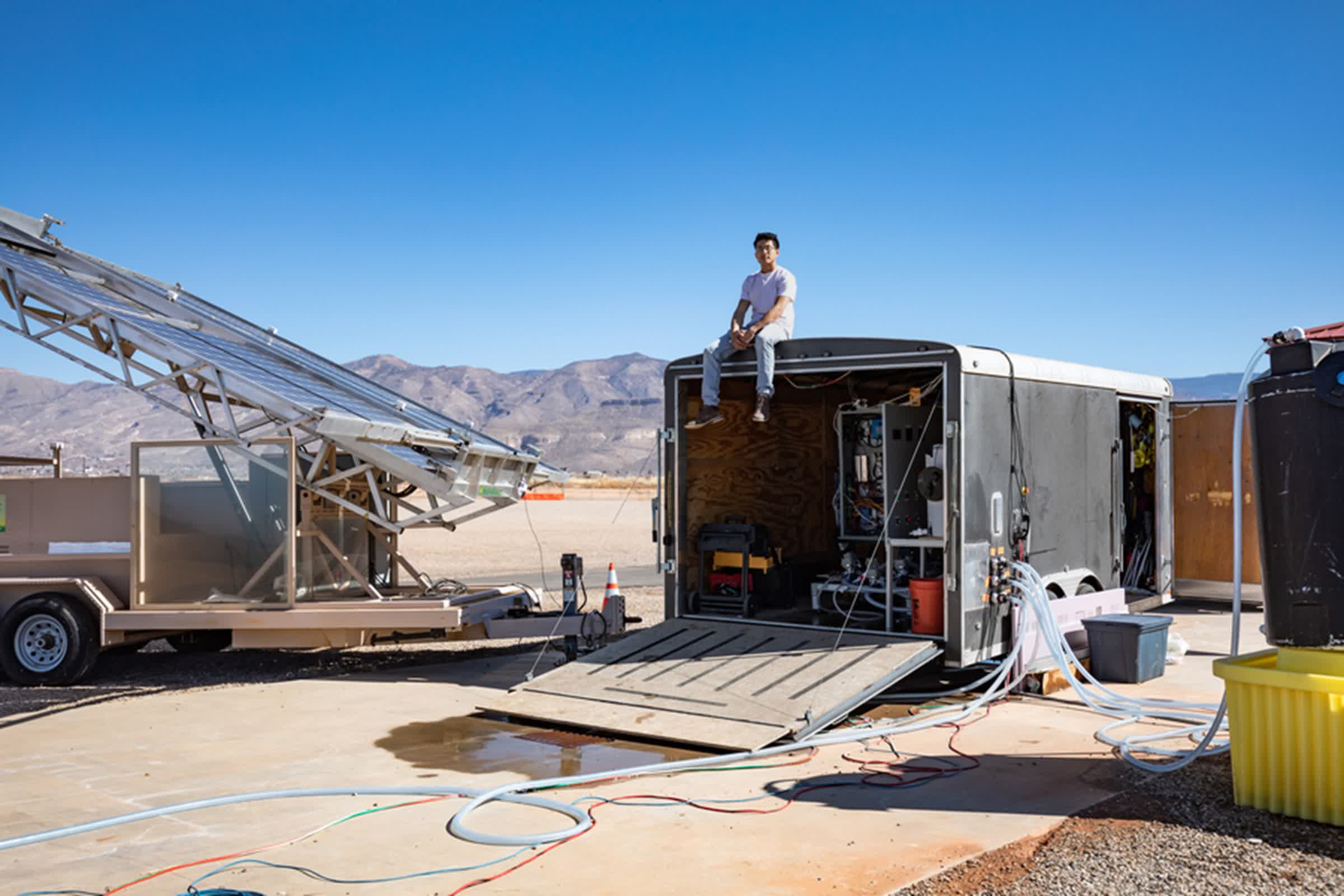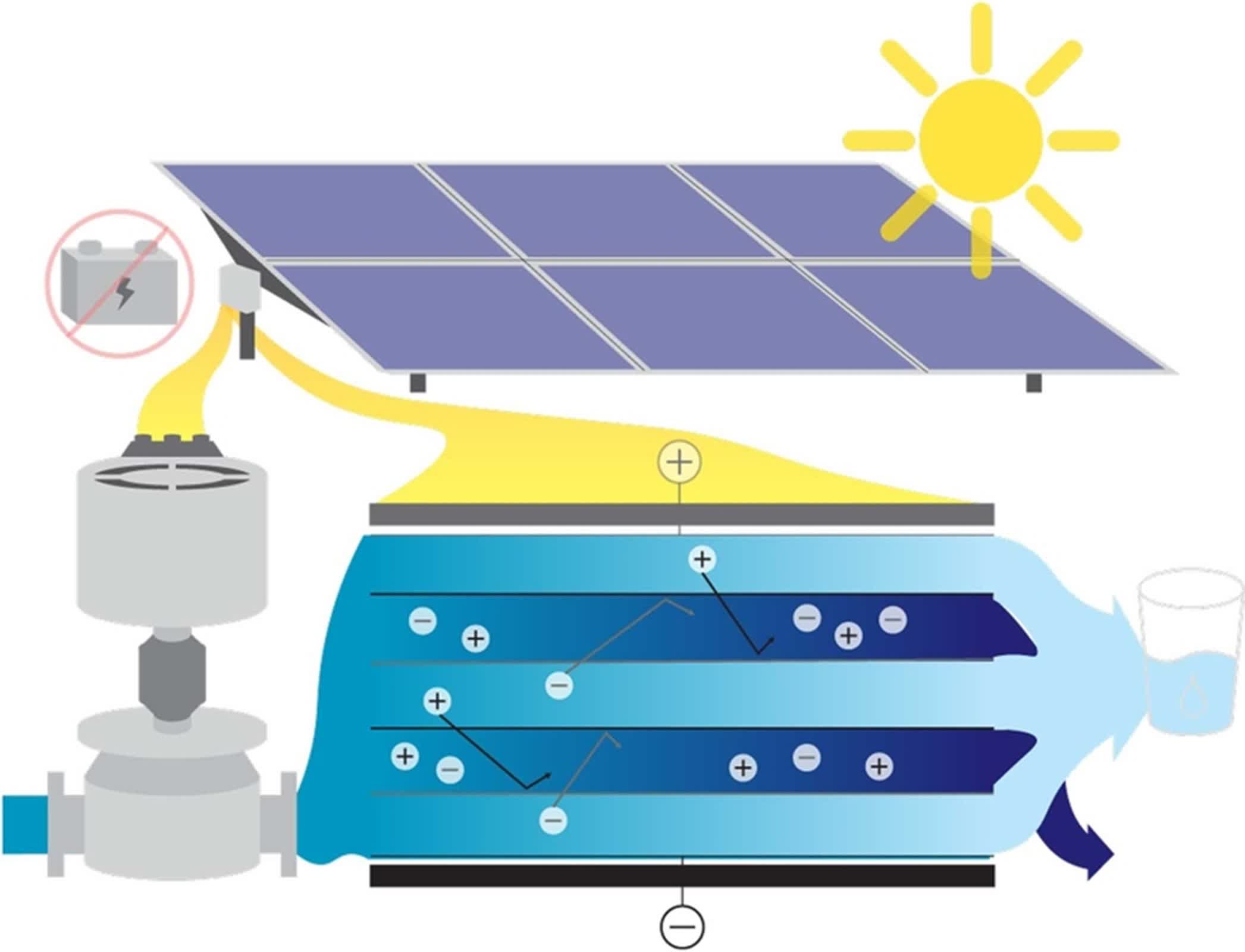Bottom line: The MIT engineers' solar-powered desalination system represents a significant leap forward in sustainable water treatment technology. By eliminating the need for batteries and maximizing the use of solar energy, the system can be deployed in regions lacking reliable power infrastructure.
Engineers at the Massachusetts Institute of Technology (MIT) have created a new desalination system that harnesses the sun's power without requiring backup batteries.
The new system, designed by a team led by Professor Amos Winter, operates in tandem with the sun's natural rhythms. As daylight increases, the desalination process ramps up, and when clouds pass overhead, it automatically adjusts its output.
This responsiveness is coupled with remarkable efficiency, with the technology harnessing over 94 percent of the electrical energy generated by its solar panels on average. The system's output is also impressive, with the prototype producing up to 5,000 liters of clean water daily.
Perhaps most notably, the system operates without needing batteries, distinguishing it from conventional desalination systems that typically rely on energy storage.
"Conventional desalination technologies require steady power and need battery storage to smooth out a variable power source like solar. By continually varying power consumption in sync with the sun, our technology directly and efficiently uses solar power to make water," said Winter, who is the Germeshausen Professor of Mechanical Engineering and director of the K. Lisa Yang Global Engineering and Research (GEAR) Center at MIT.
The MIT team's invention builds upon electrodialysis, a method that uses an electric field to remove salt ions from water. The system consists of water pumps, an ion-exchange membrane stack, and a solar panel array.
What sets it apart is its control strategy, dubbed "flow-commanded current control." The system can dynamically adjust its desalination rate multiple times per second, typically between three to five updates every second. When the system detects an excess of available power, it responds by increasing the rate at which water is pumped through the electrodialysis stacks. Concurrently, it redirects the surplus solar power to amplify the electrical current within the stack.
The MIT engineers have put their invention to the test in real-world conditions, deploying a community-scale prototype at groundwater wells in New Mexico, where it operated for six months under variable weather conditions and with different water types. The prototype supplied enough water for a small community of about 3,000 people.
This technology could be a game-changer for inland communities where access to seawater and grid power is limited. It's particularly well-suited for desalinating brackish groundwater, which is more prevalent than fresh groundwater resources.
"The majority of the population actually lives far enough from the coast, that seawater desalination could never reach them. They consequently rely heavily on groundwater, especially in remote, low-income regions. And unfortunately, this groundwater is becoming more and more saline due to climate change," said Jonathan Bessette, MIT PhD student in mechanical engineering.
The MIT team plans to test further and scale up the system, aiming to supply larger communities and even entire municipalities with low-cost, sun-powered drinking water.
The researchers are also preparing to launch a company in the coming months in the hopes of pushing out the deployment of these systems to areas in need around the world.
The researchers' paper appeared in Nature Water.
The research was supported in part by the National Science Foundation, the Julia Burke Foundation, and the MIT Morningside Academy of Design. Veolia Water Technologies and Solutions and Xylem Goulds also provided in-kind support.

